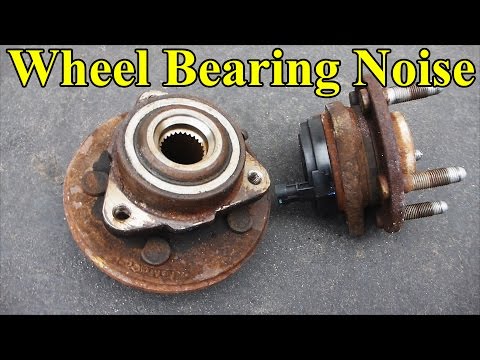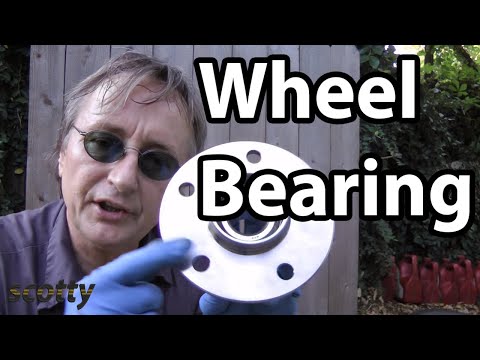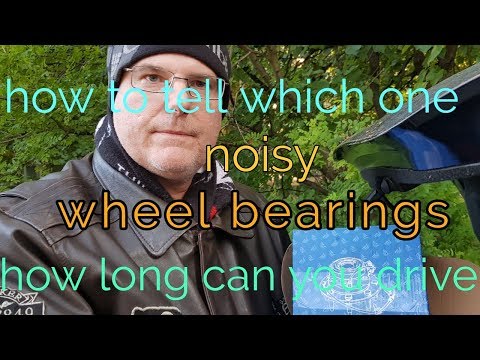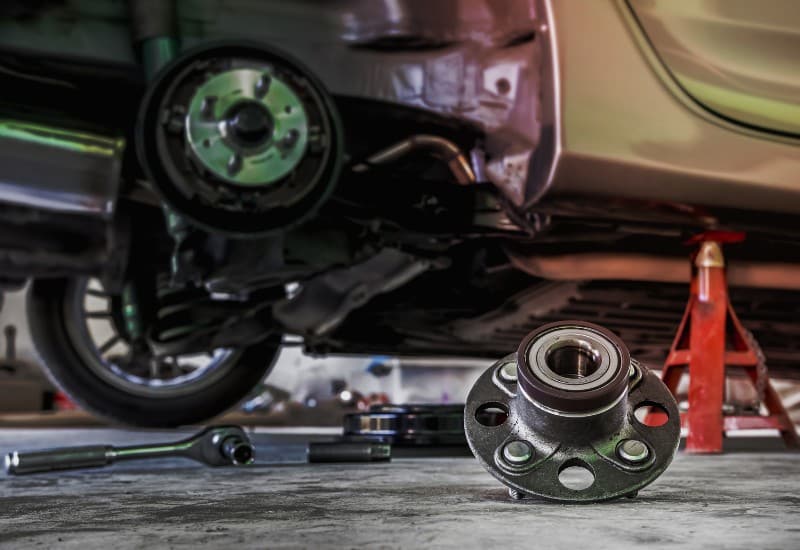
Wheel bearings help your wheels and tires to rotate smoothly and glide down the road. But wheel bearings don’t last forever, and when they start to go bad, they can cause annoying sounds, poor handling, and other serious issues.
When you notice these problems, the first step is figuring out which wheel bearing is bad, front or back, driver or passenger. You can carefully listen for noises or jack up each wheel to test for play and other symptoms. Once you have identified which wheel bearing is bad, you must replace it.
What Happens When a Wheel Bearing Goes Bad?
When wheel bearings fail, your tires and wheels can’t rotate as needed. It might be that the grease or lubrication has dried up. Or perhaps the ball bearings or other internal parts have become deformed due to hitting a bump or curb.
The symptoms of a bad wheel bearing usually start mild, with a light screeching noise, but over time, a bad wheel bearing can become a serious problem. In the worst case, when a wheel bearing fails, your wheel can fall off the vehicle while driving.
Here is a list of the most common symptoms when wheel bearings go bad.
1. Screeching or Grinding Noise
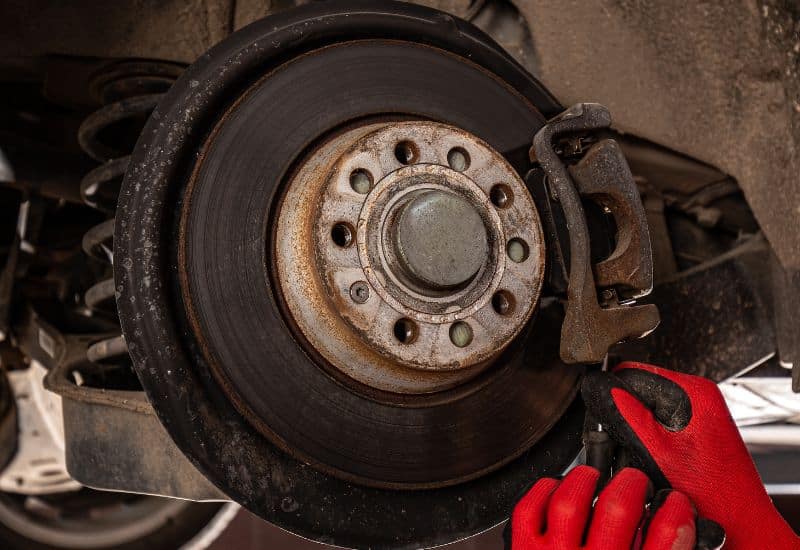
As the bearing starts to wear out, the surfaces that should allow for a smooth rotation start to fail. They’ll make a slight screeching or squealing noise. As the bearing gets worse, the noise transforms into harsh grinding.
You’ll hear the noise from a bad wheel bearing as you drive down the road. It will increase as you accelerate and stop when your vehicle is not moving. You’ll also likely notice that the noise gets louder when you turn away from the bad bearing and shift the vehicle’s weight onto it.
If the noise only comes on when braking, it’s probably related to your brakes, not the wheel bearing. And if the noise sounds like clicking when you’re turning, that’s more likely to be a faulty CV joint.
2. Vibrating or Shaking Steering Wheel
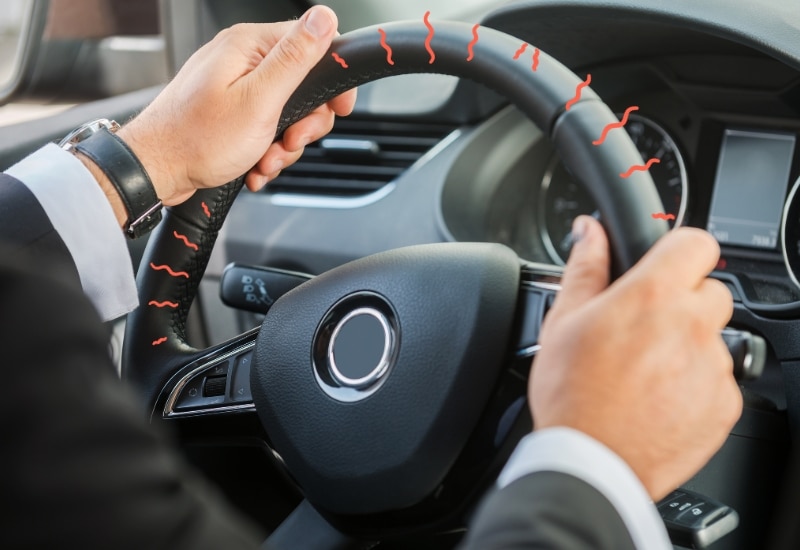
Another common symptom of a bad wheel bearing is when your steering wheel starts to shake or vibrate while driving. As a wheel bearing fails, it doesn’t keep your wheel as tight as it should. This small movement causes a vibration that you might feel in the steering wheel.
Steering wheel vibrations can also come from issues related to unbalanced wheels or tires and other steering issues.
3. Vehicle Pulls to One Side
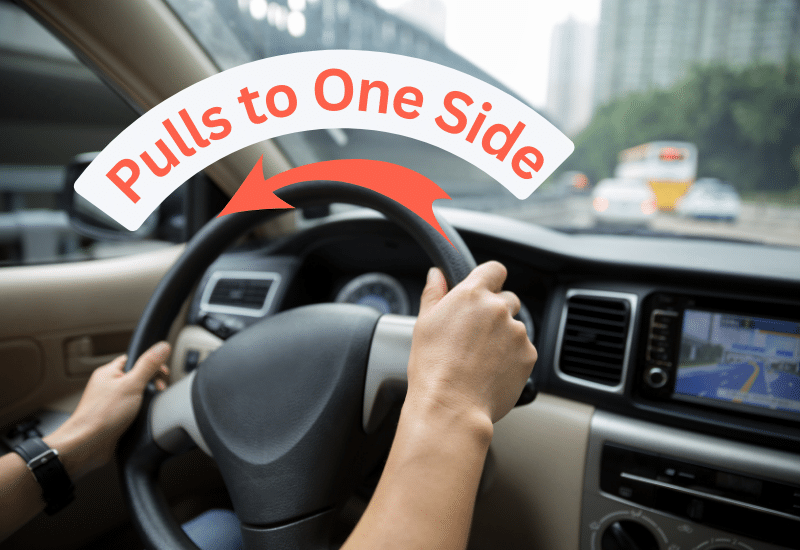
If your vehicle begins to pull to one side, this could be a bad wheel bearing. The bearing might be causing too much resistance, slowing down the wheel slightly as if the brake is applied.
Vehicles can also get pulled to one side for other reasons, like poor alignment and brake issues. But if you’ve ruled those items out, a wheel bearing might be the culprit.
4. Uneven Wear to Tires or Brakes
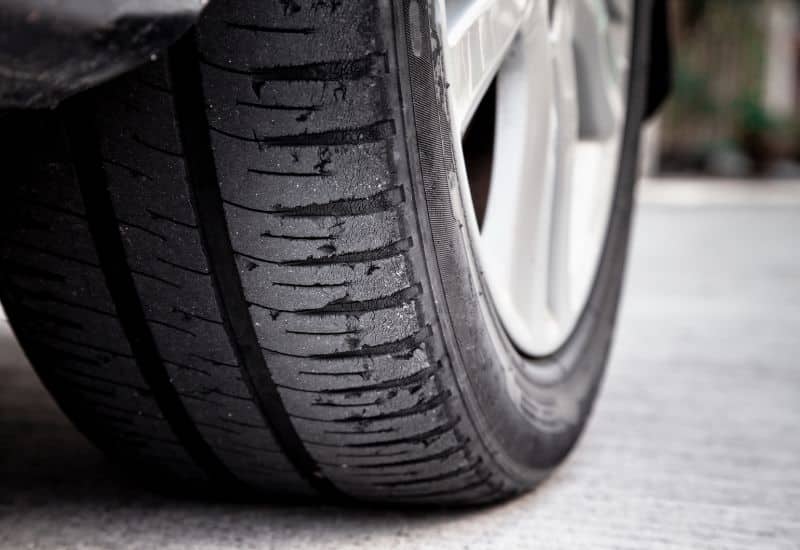
If your tires or brakes wear unevenly, it might be a sign that your wheel bearing is failing. This is especially true if you only notice it on one wheel. As the bearing loosens, the tire might be wiggling around while moving, causing uneven tread wear or allowing the brakes to make uneven contact between the pads and rotors.
5. ABS Warning Light Turns On
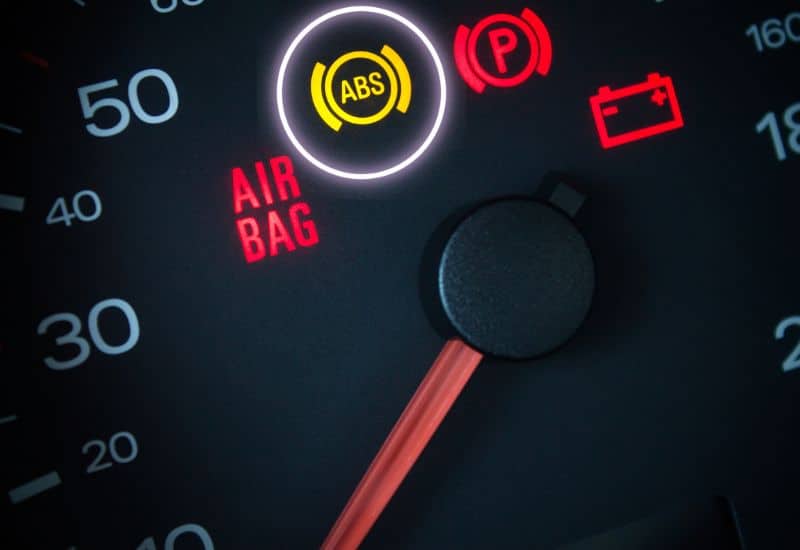
If the bearing goes bad, the ABS sensor might notice the imperfection as the wheel might not rotate like the rest. These systems rely on precisely measuring the speed of each wheel, and when the bearings go bad, it can throw them off.
If the ABS dashboard warning light turns on, the anti-lock brakes might not function in an emergency. This might cause you to skid out of control during emergency braking or when driving on snow or ice.
How To Tell Which Wheel Bearing Is Bad, Front or Back
If you think you have a bad wheel bearing, the next step is figuring out which one. To determine which side, go for a short drive and listen while turning. If the noise worsens when you turn left, a wheel bearing on the right is the problem. Or if the noise is louder when turning right, a left wheel bearing is bad.
But telling which wheel bearing is bad, front or back, is a bit more complicated. Follow this guide to identify which one.
1. Carefully Listen for Noise
It can be challenging to hear the difference, but if you drive with your windows open, you might be able to determine which area the noise is coming from, the front or rear axle.
To increase your chances of accurately identifying which bearing is bad, get a passenger to listen as well, especially if it’s on the passenger side. Driving next to a large wall can help amplify the noise. You usually don’t have to drive that fast to hear a bad wheel bearing.
2. Closely Feel for Vibration or Heat
When wheel bearings go bad, they let the tire float around a little, and you can often feel a vibration when driving down the road. If you feel the vibration in the steering wheel, that’s a strong indication that the problem is with one of the front wheel bearings.
You can also use the help of passengers to feel the vibrations on the floor or seats throughout the vehicle, as close to the wheel as possible. They might be able to notice where the vibration is worse, front or back.
A bad wheel bearing will generate more friction. As a result, the wheel attached to the bad wheel bearing will likely feel warmer than the other wheels. After driving, feel right around the center area of each wheel near the hub and lug nuts to test.
3. Check Wheels for Resistance or Play
One of the best ways to tell which wheel bearing is bad, front or back, is to jack up the wheels and feel for issues. This is a fast, easy, and accurate diagnostic test. Here’s how:
Jack up the front or rear axle, get both tires off the ground, and place wheel chocks around the two tires on the ground.
Try to rotate each tire that is in the air. You might need to put the vehicle in neutral and remove the parking brake, which is why the wheel chocks are essential.
It might be a bad wheel bearing if you feel more resistance in one wheel. You can also carefully listen for noise as you turn the wheels. A stethoscope can help.
Test each wheel for play or too much movement by grabbing hold at 12 and 6 o’clock and trying to wiggle the wheel. Repeat with your hands at 3 and 9 o’clock as well.
Excessive movement, especially if only on one wheel, can show a bad wheel bearing. The wheels can also move due to bad steering or suspension parts, like tie rods and ball joints.
4. Scan for Information if the ABS Light Is On
If your anti-lock brake sensor has noticed a problem and the warning light in your dashboard turns on, you can get more information with an OBD-II scanner. You can borrow one from an auto parts store or go to a mechanic. If you want to purchase one, verify it can read ABS codes.
When you scan the codes, they’ll usually identify which wheel has the problem. Keep in mind that an ABS code does not always mean a bad wheel bearing. It can also point to a broken sensor or other brake-related problems.
How to Repair Bad Wheel Bearing: Step-by-Step Guide
Once you figure out which wheel bearing is bad, you’ll want to repair the problem. Wheel bearings don’t last forever, and if you let the problem go too long, your wheel can fall off your vehicle.
Here is a step-by-step guide to repairing or replacing a bad wheel bearing:
Many people choose to replace the wheel bearings on both sides if one fails because the other might fail soon.
How Much Does it Cost To Replace a Wheel Bearing?
If you replace your wheel bearing yourself and don’t have to replace the entire hub assembly, it can cost as little as $25 to $75 for the bearing alone. If you need to replace the hub assembly, the part typically ranges from around $100 to $250 per wheel bearing.
To have a mechanic replace your wheel bearing, most will charge for parts plus 1 to 2 hours of labor, ranging from around $80 to $175 per hour. Including parts, a professional wheel bearing replacement costs approximately $200 to $450 each.
Can I Drive With a Bad Wheel Bearing?
When a wheel bearing starts to fail, driving on for a short time or distance might not be too dangerous. But as it degrades and the bearing worsens, it will create excessive heat, uneven tire wear, and other damage to your vehicle.
If you continue driving on a bad wheel bearing long enough, the bearing can break entirely. This is a vital connection point between your tire and your vehicle. If it breaks, your wheel and tire can come off while driving, potentially causing a serious accident or injury.
That’s why it’s best to replace a bad wheel bearing as soon as you notice it. Not only can you avoid worse damage to other components, but you can also ensure your vehicle is safe and your wheel doesn’t come off while driving.
How To Prevent A Wheel Bearing Failure?
Sometimes, there’s nothing you can do to prevent wheel bearing failure. Many wheel bearings only last around 80,000 to 100,000 miles (130,000 to 160,000 km).
If you can access and lubricate your wheel bearings, doing so regularly can dramatically extend their life. Many vehicles need wheel bearings lubricated every 10,000 to 30,000 miles (16,000 to 50,000 km). Check your service or maintenance schedule to see if your car needs this.
Hitting curbs or going over hard bumps can also damage wheel bearings and cause them to fail. Be cautious while driving, and if you have to go over bumps, do so slowly to protect your wheel bearings.
Wrap-Up: How to Tell Which Wheel Bearing Is Bad, Front or Back
You might have a bad wheel bearing if you notice a grinding noise, steering wheel vibration, or your vehicle pulling to one side. To determine which wheel bearing is bad, front or back, carefully listen or feel while driving, jack up the vehicle and check each wheel, or scan the ABS codes.
To repair the bad wheel bearing, jack it up, remove the brakes, and take off the hub and bearing assembly. Replace the wheel bearing or hub assembly, and put everything back on. Keep your new wheel bearings in good shape by regularly lubricating them, avoiding major bumps, or hitting curbs.

Written By
Jason Farrell
Jason Farrell is a certified master technician, the editor of Mechanic’s Diary in Pittsburgh, Pennsylvania. He is ASE (Automotive Service Excellence) certified and earned a Bachelor’s Degree in Automotive Technology from Pittsburg State University. With nearly 18 prior years of experience in the automotive field, he has extensive knowledge about Domestic, European, and other foreign makes and models of cars and light trucks. Jason’s experience working as a technician and service manager at dealerships, gave him the experience and know-how of most aspects of inspection, diagnosis, and repair from engine and drivability to electrical, HVAC, brakes, steering and suspension and everything in between.

